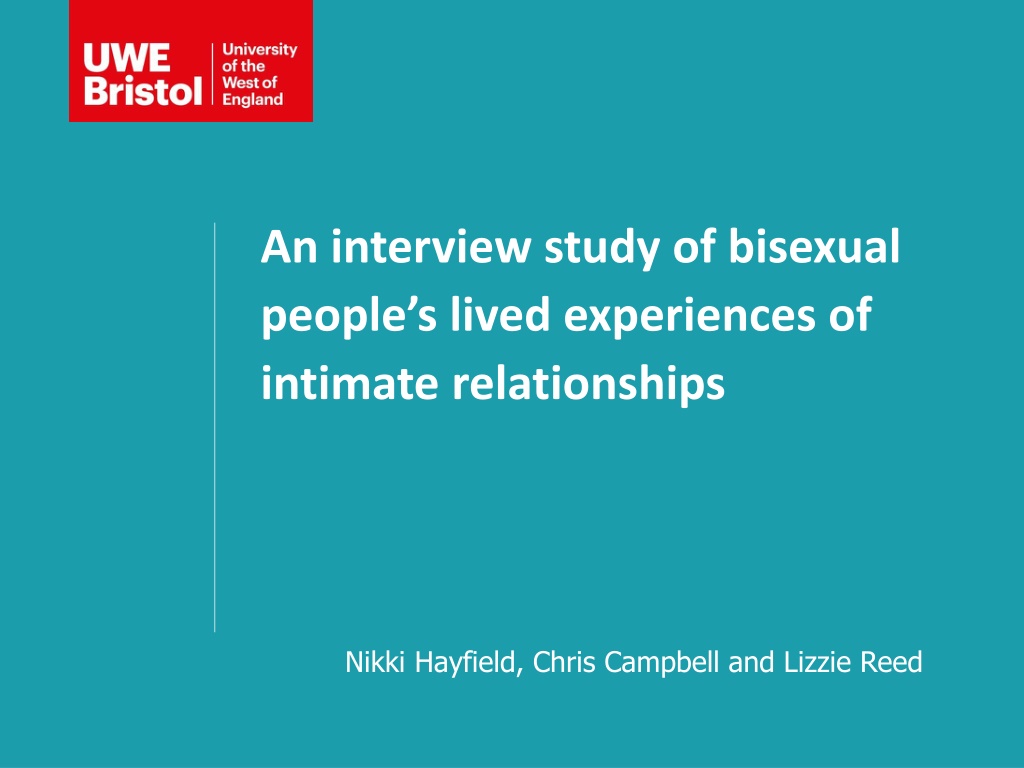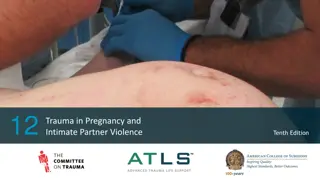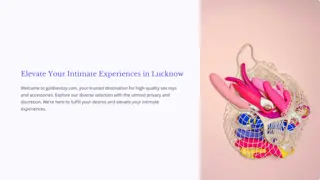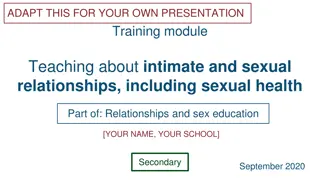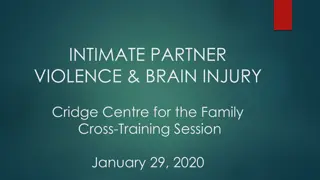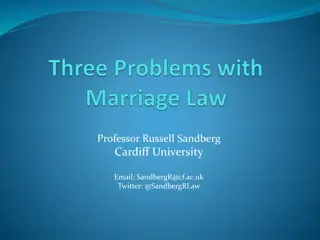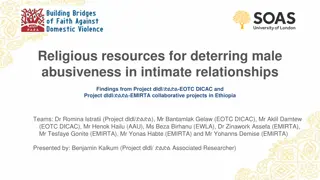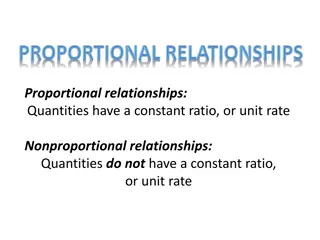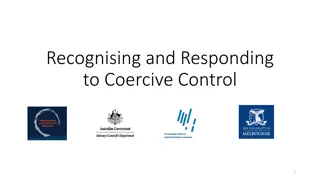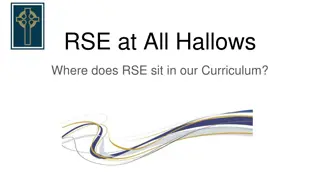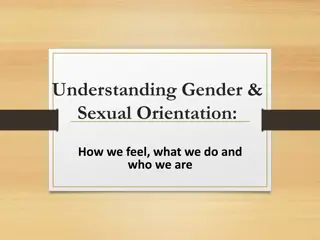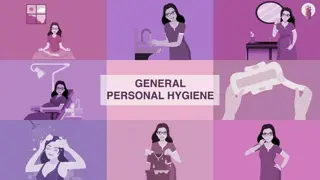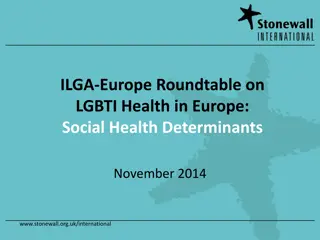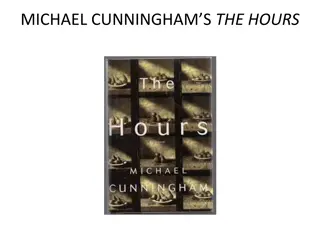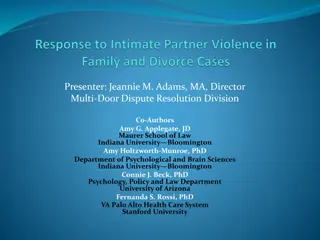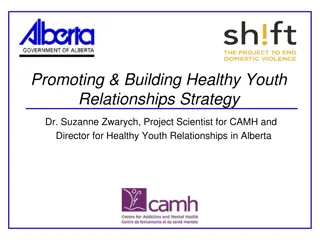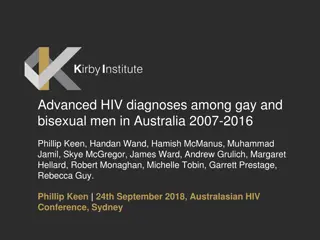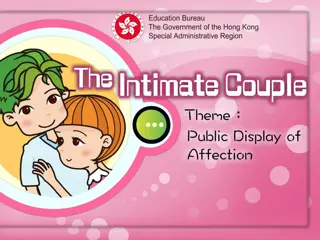Bisexual Lived Experiences in Intimate Relationships
This study explores the challenges and experiences faced by bisexual individuals in intimate relationships, shedding light on bisexual erasure, misunderstandings, and societal attitudes. Through qualitative interviews, the research delves into themes such as marginalization, partner perceptions, and personal freedom in relationships. Despite facing stereotypes and biases, participants express a sense of empowerment and authenticity in navigating their identities and connections.
Download Presentation

Please find below an Image/Link to download the presentation.
The content on the website is provided AS IS for your information and personal use only. It may not be sold, licensed, or shared on other websites without obtaining consent from the author. Download presentation by click this link. If you encounter any issues during the download, it is possible that the publisher has removed the file from their server.
E N D
Presentation Transcript
An interview study of bisexual people s lived experiences of intimate relationships Nikki Hayfield, Chris Campbell and Lizzie Reed
Background Bisexual erasure and marginalisation Bisexuality and relationships Methods Data collection Data analysis Preliminary results
Bisexuality and relationships Many (mis)understandings of bisexuality relate to relationships (e.g., Anderson et al., 2015; Armstrong & Reissing, 2014; Klesse, 2011; Spalding and Peplau, 1997; Zivony & Lobel, 2014). A real lesbian wouldn t touch a bisexual with a bargepole (Turner, 2015:139) other research also concludes that many people would be reluctant to enter into a relationship with a bisexual person (e.g., Eliason, 1997; Feinstein et al., 2016; Spalding & Peplau, 1997) . Bisexual people and their relationships (e.g., Anderson et al., 2015; Armstrong & Reissing, 2014; Bradford, 2004; Buxton, 2000; 2004; 2006; 2011; Gustavson, 2009; Hartman-Linck, 2014; Lahti, 2015; Li et al., 2013; Turner, 2015) #StillBisexual (see, Gonzalez et al., 2016)
Methodology Qualitative interviews - semi structured interview schedule (Edwards & Holland, 2013) Participants: Twelve women Thematic analysis six stage process of identifying themes in the data (Braun & Clarke, 2006; Clarke, Braun & Hayfield, 2015; Terry, Hayfield, Clarke & Braun, 2017)
Unstable and unreliable partners They ll say they ll never date a bisexual girl, or oh that just means your gay and you re too scared of saying it , oh that means you re straight and you just want to experiment , oh do you mean you re just confused? , you haven t decided , but don t all bisexual girls cheat on people , oh but aren t all bisexual girls sluts? , oh do you want to have a threesome (P2, Kate Slater, 22, in a relationship with a lesbian).
Wonderful world, beautiful people Because it s seem to strangely restrictive to decide there is a group of people you re not attracted to it just feels like there s a lot more of my life that I can explore. I m not saying that being one or the other is a bad thing but to me it seems a bit odd I suppose, because the world is a beautiful place and full of beautiful people (Stephanie, 19, in a relationship with a woman). It s not that my code about being bisexual allows me to have different relationships, no, I just feel freer because I don t have to follow your not-real rules (laughs). Even if I do! (Sophia, 23, in a relationship with a straight man)
Other preliminary themes Participants working hard to strategically maintain their bisexuality within the context of their relationships Partners positioned as (partially) supportive of their bisexuality
Conclusions Our research identifies new knowledge about the (lack of) visibility and validity for bisexual people
References Anderson, E., Scoats, R., & McCormack, M. (2015). Metropolitan bisexual men's relationships: Evidence of a cohort effect. Journal of Bisexuality, 15(1), 21-39. Armstrong, H. L., & Reissing, E. D. (2014). Attitudes toward casual sex, dating, and committed relationships with bisexual partners. Journal of Bisexuality, 14(2), 236-264. Bradford, M. (2004). Bisexual issues in same-sex couple therapy. Journal of Couple & Relationship Therapy, 3(2- 3), 43-52. Buxton, A. P. (2000). Writing our own script: How bisexual men and their heterosexual wives maintain their marriages after disclosure. Journal of Bisexuality, 1(2-3), 155-189. Buxton, A. P. (2004). Works in progress: How mixed-orientation couples maintain their marriages after the wives come out. Journal of Bisexuality, 4(1-2), 57-82. Buxton, A. P. (2006). Counseling heterosexual spouses of bisexual men and women and bisexual-heterosexual couples: Affirmative approaches. Journal of Bisexuality, 6(1-2), 105-135. Buxton, A. P. (2011). Reflections on bisexuality through the prism of mixed-orientation marriages. Journal of Bisexuality, 11(4), 525-544. Clarke, V., Braun, V. & Hayfield, N. (2015) Thematic analysis. In J. Smith (Ed.), Qualitative Psychology: A Practical Guide to Research Methods (3rded.) (p.222-248). London: Sage. Edwards, R. & Holland, J. (2013). What is qualitative interviewing? London: Bloomsbury Academic. Eliason, M. J. (1997). The prevalence and nature of biphobia in heterosexual undergraduate students. Archives of sexual behavior, 26(3), 317-326. Feinstein, B. A., Dyar, C., Bhatia, V., Latack, J. A., & Davila, J. (2016). Conservative beliefs, attitudes toward bisexuality, and willingness to engage in romantic and sexual activities with a bisexual partner. Archives of sexual behavior, 45(6), 1535-1550. Gonzalez, K. A., Ramirez, J. L., & Galupo, M. P. (2016) I was and still am : Narratives of Bisexual Marking in the# StillBisexual Campaign. Sexuality & Culture, 1-23.
References Gustavson, M. (2009). Bisexuals in relationships: Uncoupling intimacy from gender ontology. Journal of Bisexuality, 9(3-4), 407-429. Hartman-Linck, J. E. (2014). Keeping bisexuality alive: Maintaining bisexual visibility in monogamous relationships. Journal of Bisexuality, 14(2), 177-193. Hayfield, N., Clarke, V., & Halliwell, E. (2014). Bisexual women s understandings of social marginalisation: The heterosexuals don t understand us but nor do the lesbians . Feminism & Psychology, 24(3), 352-372. Klesse, C. (2005). Bisexual women, non-monogamy and differentialist anti-promiscuity discourses. Sexualities, 8(4), 445-464. Klesse, C. (2011). Shady characters, untrustworthy partners, and promiscuous sluts: Creating bisexual intimacies in the face of heteronormativity and biphobia. Journal of Bisexuality, 11(2-3), 227-244. Lahti, A. (2015). Similar and equal relationships? Negotiating bisexuality in an enduring relationship. Feminism & Psychology, 25(4), 431-448. Li, T., Dobinson, C., Scheim, A. I., & Ross, L. E. (2013). Unique issues bisexual people face in intimate relationships: A descriptive exploration of lived experience. Journal of Gay & Lesbian Mental Health, 17(1), 21- 39. Monro, S. (2015). Bisexuality: Identity, politics, and theories. Basingstoke: Palgrave Macmillan. Spalding, L. R., & Peplau, L. A. (1997). The unfaithful lover: Heterosexuals' perceptions of bisexuals and their relationships. Psychology of Women Quarterly, 21(4), 611-625. Terry, G., Hayfield, N., Clarke, V. and Braun, V. (in press) Thematic analysis. In C. Willig and W. Stainton Rogers (Eds.). The Sage Handbook of Qualitative Research in Psychology (2nded.). London: Sage Publications Ltd. Solot, D., & Miller, M. (2001). Unmarried Bisexuals: Distinct Voices on Marriage and Family. Journal of Bisexuality, 1(4), 81-90. Turner, G. (2015). A real lesbian wouldn't touch a bisexual with a bargepole' Contesting boundaries in the construction of collective identity. Critical Discourse Studies, 12(2), 139-162. Zivony, A., & Lobel, T. (2014). The invisible stereotypes of bisexual men. Archives of Sexual Behavior, 43(6), 1165-1176.
